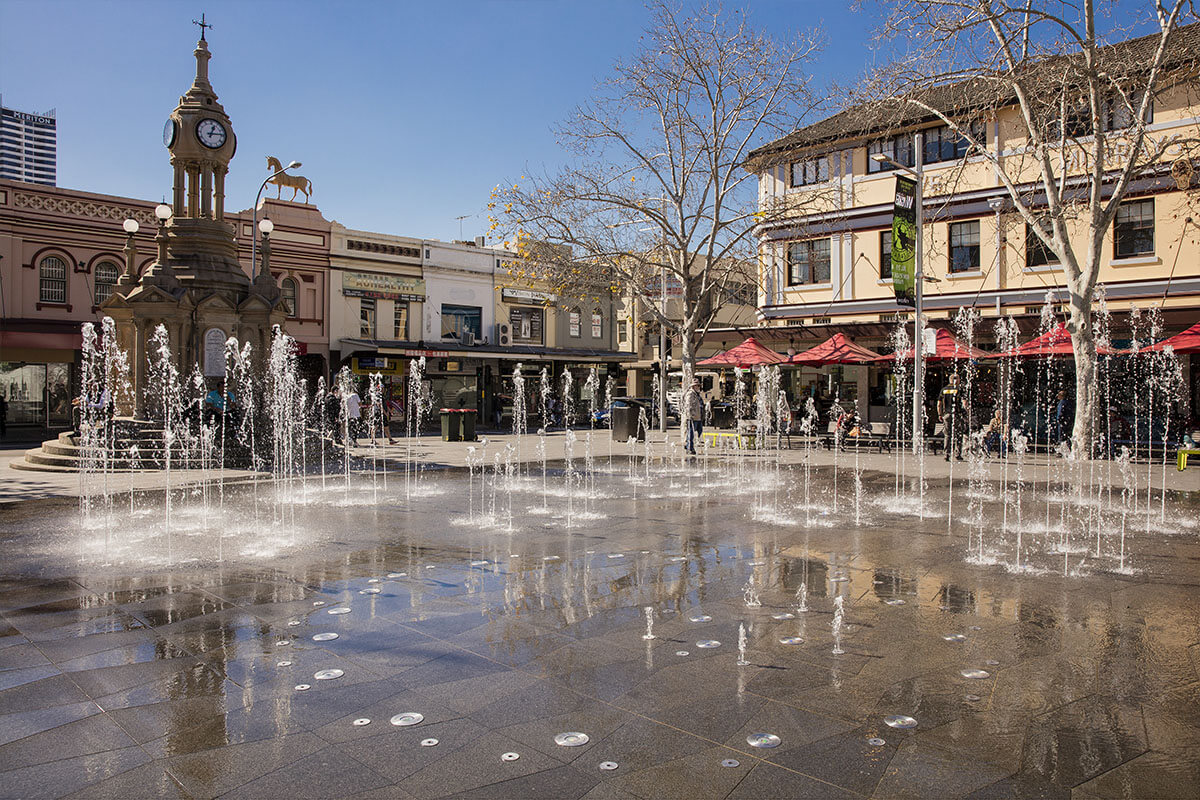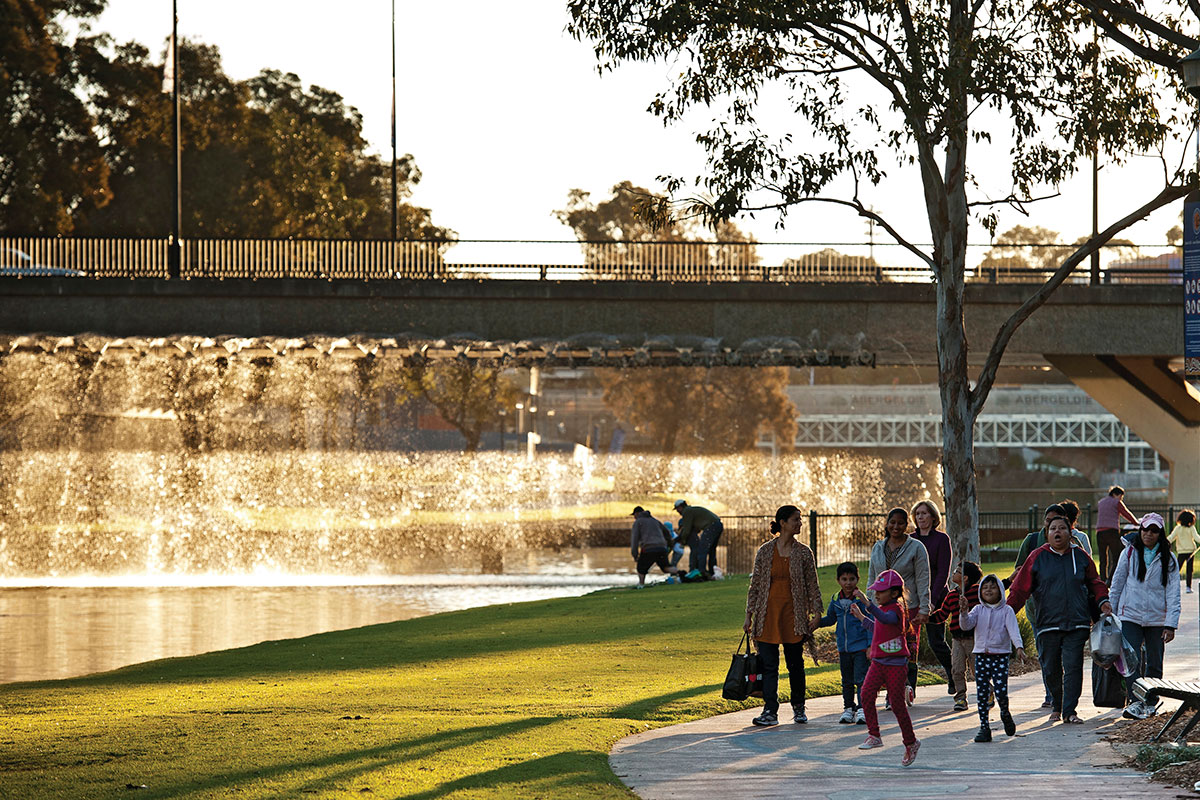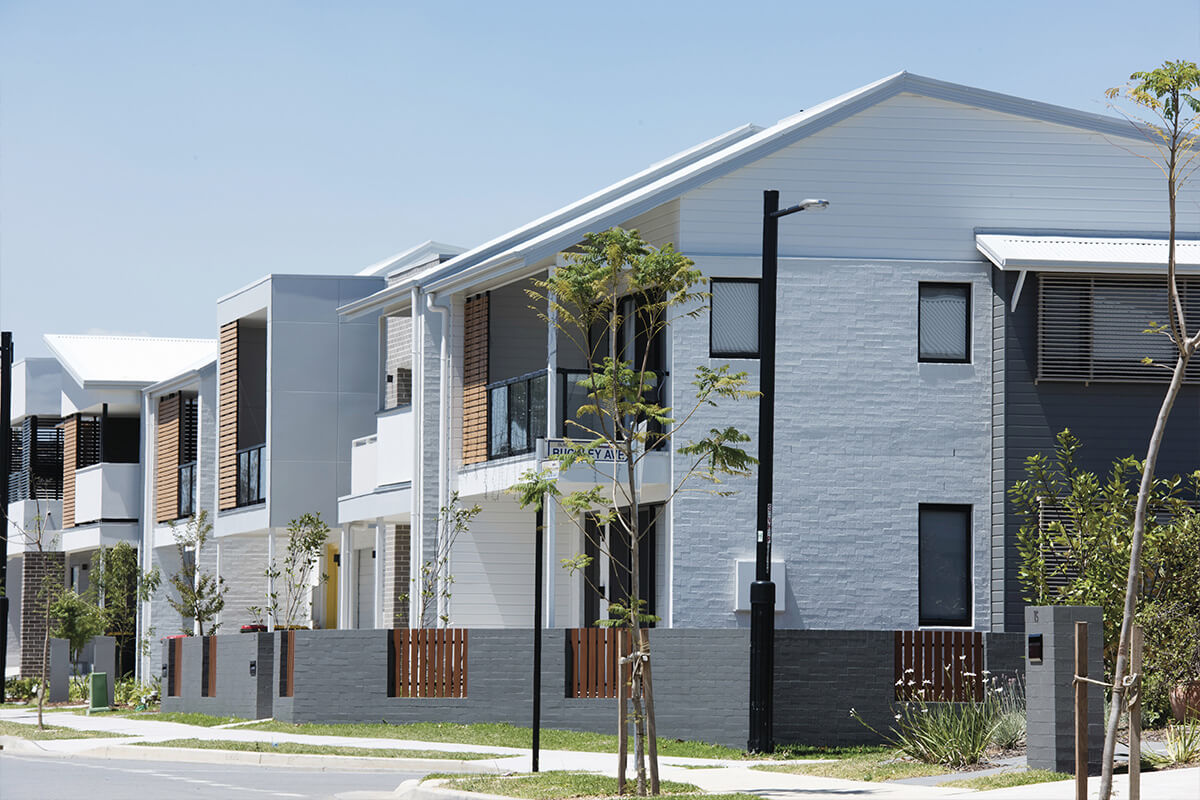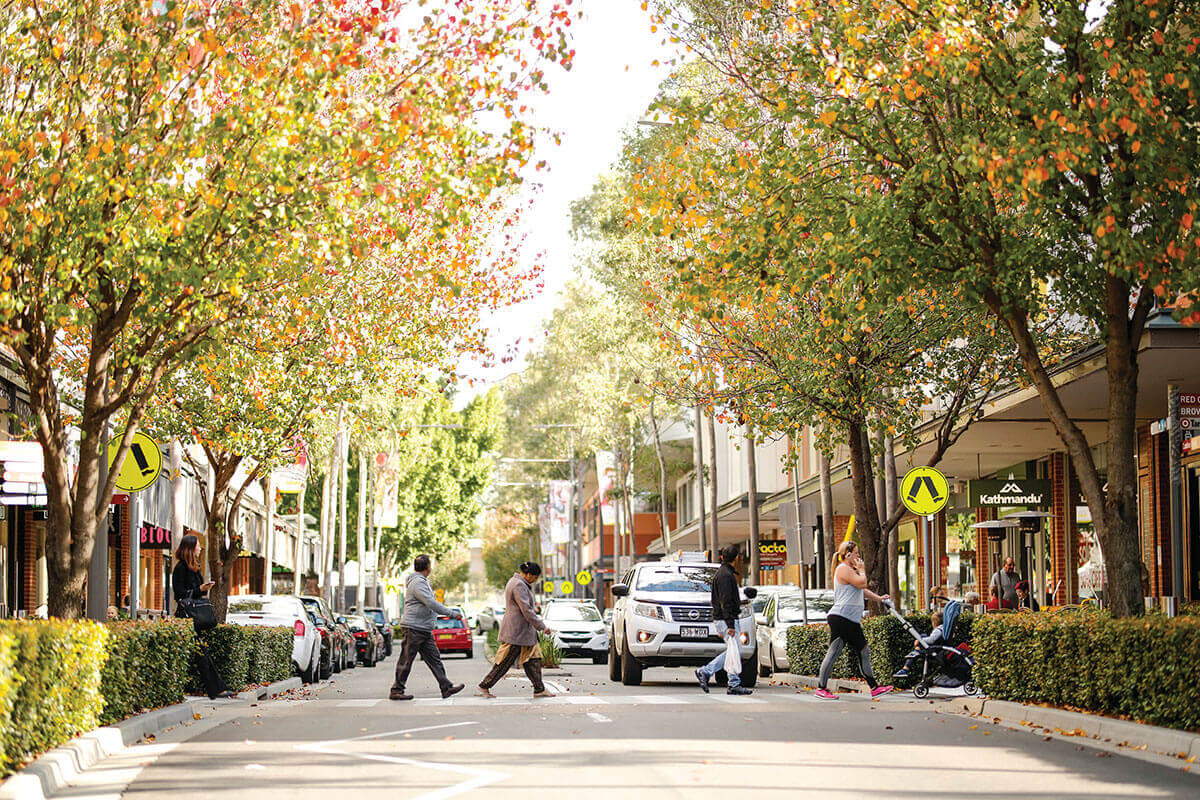People have a special connection to water in our landscapes. Being near water can make people feel cooler, calm and connected to the natural environment.
We can all look for ways to sustainably incorporate water into the urban areas and use water to reduce urban heat.
Develop and implement an integrated water cycle management strategy
Water can be managed strategically across areas and precincts by developing an integrated water cycle management strategy. These strategies promote efficient, sustainable and productive water management that is integrated with land use planning.
Implementing an integrated water cycle management strategy will ensure that the water needs of urban areas are met, while also allowing water to be harnessed in the landscape to cool communities.
To develop an integrated water cycle management strategy with a strong focus on mitigating urban heat:
- consider local and regional drivers such as population growth, urbanisation and climate change
- develop a clear vision, objectives and outcomes that the strategy aims to achieve
- assess your area’s current water performance, including the health and quality of waterways, access to water supply and the condition of stormwater harvesting schemes and water recycling plants
- use vegetation, urban heat island and heat vulnerability index data to understand where the community is most vulnerable and to track progress in delivering actions
- be clear that urban heat is a driver of the strategy and embed appropriate objectives and outcomes to ensure water is efficiently used and managed to cool the local community. This could be achieved by:
- designing water infrastructure to provide multiple benefits for the community and environment, such as cooling and greening and water quality
- integrating water planning with land use planning to achieve liveability outcomes that include urban cooling.
Use water to cool
Across large sites and public spaces, incorporate water-sensitive urban design principles into your development to retain in water the landscape.
On sites
- divert stormwater into the soil profile and reduce surface runoff using passive irrigation systems such as:
- raingardens
- bioretention basins and swales
- constructed or restored wetlands
- wicking lawns on turf open space and sports fields
- slow down and reduce stormwater runoff by installing green roofs and walls
- install water features including public fountains, ponds, sprinklers and water curtains to help reduce ambient temperatures. Ensure these features use water efficiently – including rainwater, harvested stormwater and recycled water – and adhere to water quality guidelines.
Around your home
- introduce water-efficient technologies, including rainwater harvesting and wastewater recycling. These can reduce everyday potable water demand for things such as irrigation and toilet flushing
- adopt water-wise gardening techniques:
- plant the right species for your local climate and conditions
- introduce mulch
- use efficient watering options to minimise water use, including installing a raingarden to passively irrigate your garden
- water gardens early in the morning and in the late afternoon to reduce evaporation loss, sustain higher levels of soil moisture and increase daytime evapotranspiration.
- use a cover to reduce evaporation from your pool and save time and money on pool maintenance.
For more information, visit Take action with cool materials and Take action with greening.
Deliver water through planning mechanisms
Strategic plans and planning controls can be used by councils and state government to respond to urban heat. For more information, visit Using planning strategies and controls for cooling.
Other actions you can take
We can use urban structure to create cooler and more liveable spaces.
We can all play a role in building cooler developments.
We can all protect existing trees and enhance urban greening.
Resources
NSW water strategy is a 20 year state-wide strategy to improve the security, reliability and quality of the state's water resources.
Greater Sydney Water Strategy provides direction for councils, government, industry and community groups to deliver sustainable and resilient water services to Greater Sydney for the next 20 to 40 years.
Moving toward Water Sensitive Cities produced by the CRC for Water Sensitive Cities provides guidance for councils, government and industry seeking to transition toward a more water sensitive future. It draws on experience of cities from around the world to provide practical examples of water-sensitive transitions in action.
Principles for engaging communities in water sensitive city transitions produced by the CRC for Water Sensitive Cities, provides practical guidance and key principles for councils, government and industry to engage in communities in local water-sensitive city transitions.
Designing for a cool city: Guidelines for passively irrigated landscapes produced by the CRC Water Sensitive Cities, provides guidance for councils, government and industry on how to use stormwater to improve the health of plants and trees and design passively irrigated landscapes.
Haydon Park investigation study – Planting trees in stormwater basins (PDF, 8 MB) (NSW Government) provides insight for councils, government and industry and park maintenance staff on the impact of planting trees in open spaces with the additional purpose of using them in stormwater detentions basin.
Haydon Park investigation study – Practical guidance (PDF, 4 MB) (NSW Government) provides practical guidance for councils, government and industry and park maintenance staff on how to incorporate tree canopy cover within stormwater basins.
How to use less water in your home and garden are water saving tips from Sydney Water.



